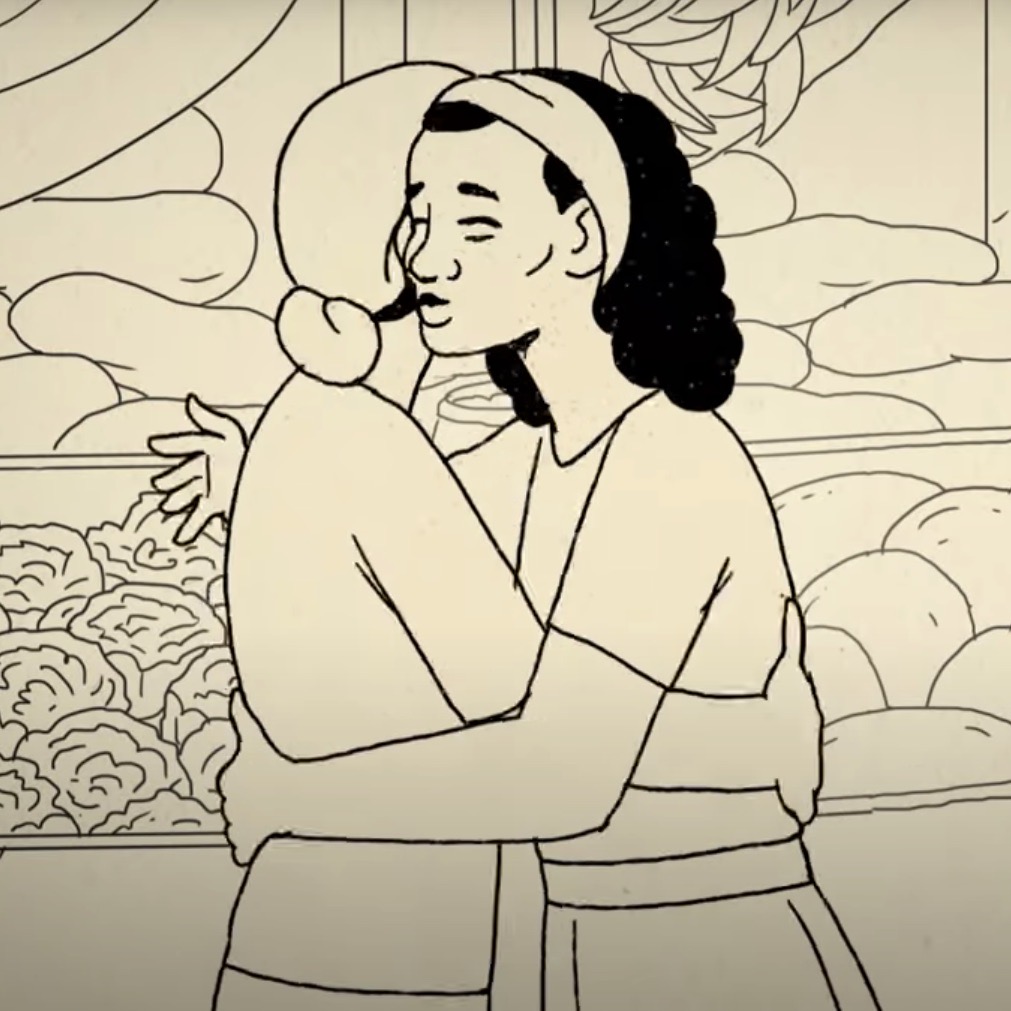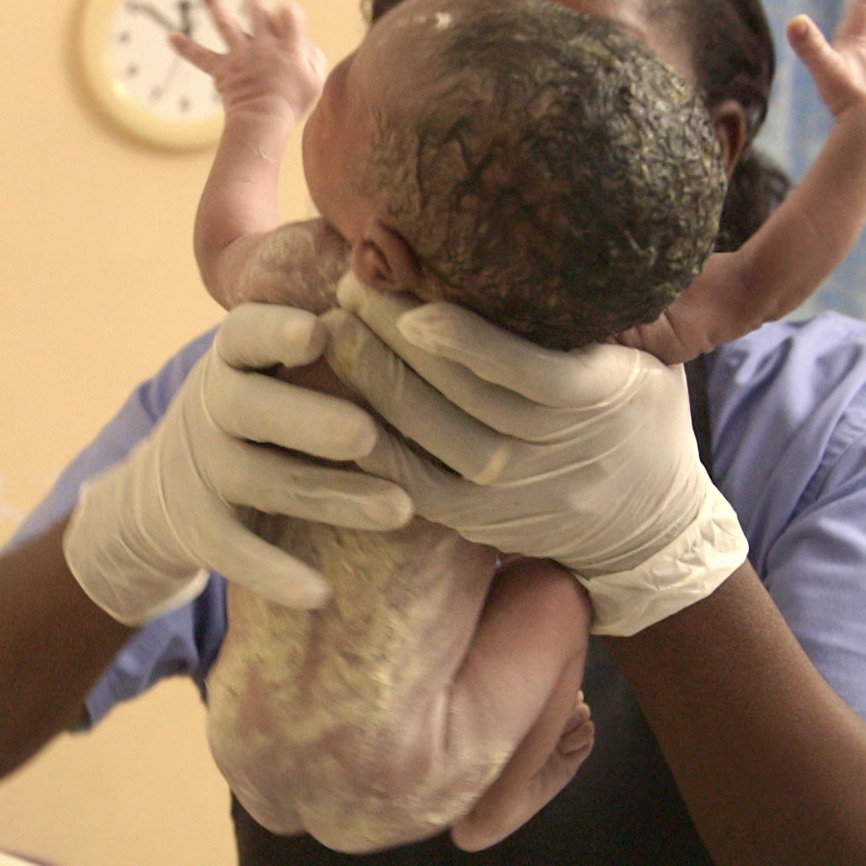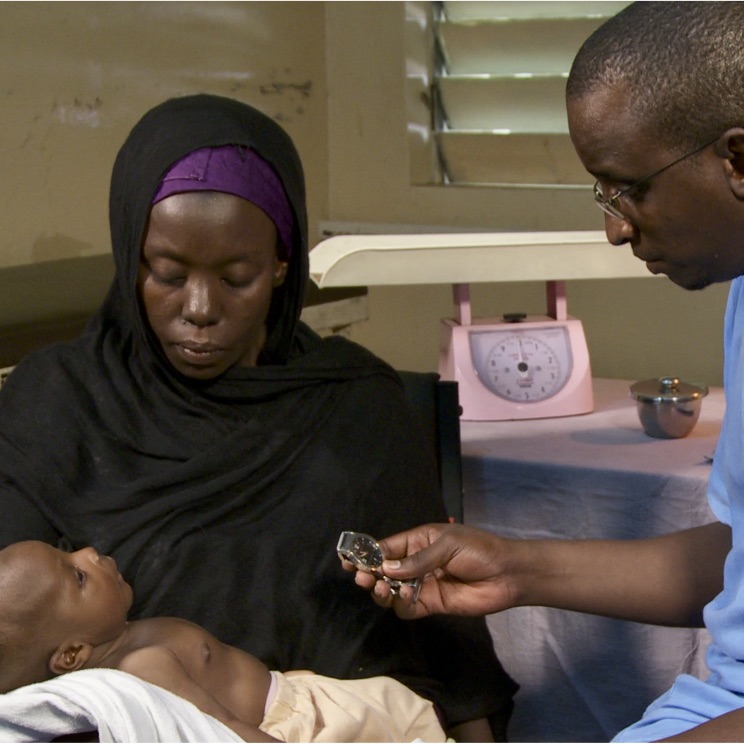Our Projects
Learn about the back stories of our video projects – why we chose the topic, our information sources, where we filmed, and who was involved. Also learn about how the videos are making a difference and what people are saying.
Nurturing Care
Our first set of films focus on responsive care—the ability of caregivers to notice, understand, and respond to their child’s signals in a timely and appropriate manner. These videos comprise the USAID Responsive Care and Early Learning Series, and were developed in collaboration with JSI Research & Training Institute, Inc. (JSI).
The 10 films aim to help health workers improve the quality of counseling and other services they provide that promote responsive care. The footage was shot in households and clinics in Ghana and the Kyrgyz Republic.
Diabetes
More than half a billion adults worldwide are living with diabetes, and nearly 75% of them live in low- and middle-income countries. Our Diabetes Series is designed to help guide providers in developing countries in good diabetes care; help people with diabetes with their own care; and help the general public increase their understanding of this disease.
The full set of videos includes more than 30 topics. They were filmed in Kenya and Sri Lanka in 2022.
Family Planning
Maternal deaths can be reduced by an estimated 30% if contraception is accessible and used correctly by women. Our Family Planning Series is designed to help women and their partners choose and use contraceptive methods that fit their own needs, and better train health care providers to improve their care.
A set of 40 videos for health workers and a companion set of 23 videos for women and their partners cover each contraceptive method along with important reproductive health topics including infection prevention in clinics.
Our Mobile Applications
We have created three apps that give users the ability to stream or download our videos to their smartphones. You can use these apps to watch the videos, save them to your phone to use offline, or share them with others. They are available on both the Google Play store and iPhone App store.
“Birth & Beyond” includes all the videos we have been created specifically for mothers and families. “Learn Family Planning” provides access to our family planning videos for women and their partners, while “Practice Family Planning” is for health workers.
The Story of Coronavirus
This was the third in our series of “The Story of …” animations, developed with award-winning animator Yoni Goodman, and published in 2021.
As with our other animations, we make the invisible germ visible, an approach that helps people immediately grasp how easily the disease is transmitted. With this understanding, people can then see and better understand how to protect themselves and others, both in the community and at home.
Childbirth
These teaching videos bring to life skills and practices for the safe and effective care of birthing women. Filmed in maternities in Africa, Asia, and the Caribbean, these videos feature local midwives providing best-practice care for women during all phases of childbirth, and cover normal labor and birth, midwifery skills, complications, and postpartum hemorrhage.
The series was produced in two phases, in 2013-2015 and 2019-2020, and now includes 47 unique videos.
Nutrition
This series is called First Foods for Young Children. We collaborated with UNICEF in producing the 17 films: a set for health workers and a set for caregivers. The footage was shot in over 60 households in Nigeria, Kenya, and Nepal.
The videos show how to improve feeding practices during the nutritionally vulnerable time of early childhood (from ages six months to two years).
Care of Small Babies
Premature birth is the leading cause of death for children under five. Simple interventions easily taught with video can save many of these vulnerable newborns.
We produced a series of 27 videos closely following the Essential Care for Small Babies curriculum (2015) developed by the American Academy of Pediatrics and based on the latest WHO guidelines. We shot the footage for this series in Bangladesh, Uganda, and Nepal.
The Story of Ebola
Following on the success of The Story of Cholera, we teamed up with animator Yoni Goodman on this animation that makes visible the invisible Ebola germs to help people see and understand how Ebola spreads and how to protect themselves.
It was developed in response to the Ebola epidemic in West Africa in 2014 to help dispel widespread rumors and myths, and provide information that people could easily grasp and remember. It was used widely in the Congo (DRC) outbreak that began in 2018, and is available to help communities cope with potential future outbreaks.
Breastfeeding
Of all preventive interventions, breastfeeding has the greatest potential impact on child survival, yet only 40% of babies in the developing world are exclusively breastfed.
Virtually every mother can breastfeed, if given the right support, advice, and encouragement, as well as practical assistance to resolve problems. These videos are used in nearly every country and available in more than 40 languages.
Newborn Care
The Newborn Care Series started as our pilot series in 2011. We filmed in high-volume hospitals in developing countries to have the opportunity to film sick babies. The series covers newborn skills, newborn problems, and special care (including referrals and home visits).
Due to the rare opportunities to shoot sick babies, we continued to film newborn care practices for many years, and now have 42 unique videos. Our resuscitation video was a first of its kind—a live-action video demonstrating the life-saving steps of Helping Babies Breathe.
The Story of Cholera
This was our very first film, a simple 4-minute animated story about cholera and how to prevent it. We worked closely with world-renowned animator Yoni Goodman, who has a remarkable ability to capture human emotion in animation. Our approach features making invisible germs “visible” so that viewers can easily understand transmission.
The Story of Cholera is used worldwide – in cholera outbreaks, in locations where cholera is a potential threat such as refugee camps, and in community hygiene education. It continues to be incredibly popular – with hundreds of millions of views – and has gone viral on social media.













